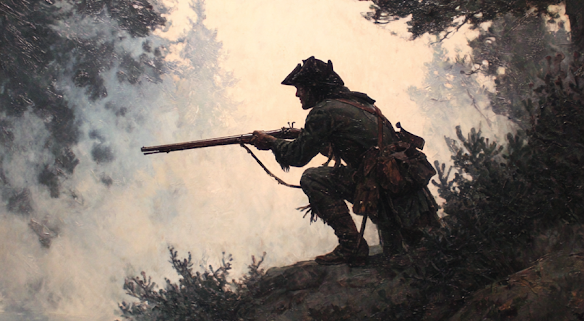
Picture this: A sleek corporate megastructure towers above the old skyline of Detroit—gleaming glass, aggressive symmetry, and the sterile grandeur of wealth incarnate. At the very top, the executive boardroom is flooded with daylight. It’s a Tuesday at 2:30 PM, and inside, everything feels safe, civilized, predictable.
The leadership team of Omni Consumer Products is mid-presentation, discussing the rollout of a revolutionary new product. The CEO—the “Old Man”—sits at the head of a massive table that can seat forty. He radiates a cold kind of wisdom, more feared than loved. Standing beside him is his second-in-command, Dick Jones—less wise, but a hundred times more ruthless. He gestures proudly toward the entrance. The doors open.
In strides ED-209.
Twelve feet tall. Twin cannons for arms. Hydraulic legs that hiss with power. A walking embodiment of corporate hubris and unchecked ambition.
Dick hands a pistol to one of the junior execs—a fresh-faced, eager-to-please nobody—and tells him to point it at the droid.
ED-209 wakes up with a guttural, metallic growl.
“You have 20 seconds to comply.”
The gun is dropped. The countdown doesn’t stop. The mood shifts. Unease becomes panic. The young man is shoved into the center of the room as ED-209 opens fire—hundreds of rounds tearing through flesh and mahogany alike, spraying gore across the suits of horrified onlookers.
It’s not just violent. It’s obscene.
And it’s perfect.
That scene—from Paul Verhoeven’s RoboCop—is more than iconic 80s action. It’s a masterclass in subverting safety. It takes a setting of power, order, and normalcy—a corporate boardroom—and desecrates it with raw, unstoppable violence. It shocks because you don’t expect it there. The horror is effective precisely because it breaks into a place that should be untouchable.
Alfred Hitchcock, the undisputed master of suspense, understood this principle better than anyone. His films rarely hinge on location alone—they hinge on violation.
He made the horror worse by placing it somewhere that felt safe. Think about it:
In each of these moments, normality isn’t just a backdrop—it’s the bait.
When terror strikes where things should be safe, the impact is twice as visceral.
This technique doesn’t belong to cinema alone—it’s a deadly tool in the hands of a great Game Master.
It’s easy to place danger in the obvious places: the haunted mansion, the cursed woods, the abyssal ruins. But horror becomes transcendent when you violate the familiar.
Think about it in your own TTRPGs.
These are places players trust. They are sanctuaries. And that’s why they are perfect targets. A goblin raid on the king’s banquet. A possessed child appearing at a christening. A flesh construct disguised as a local merchant. The horror lands harder when it steps across the threshold of safety.
You can still build toward it. Don’t be afraid to spend time describing the beauty, the smells, the light, the order. Make the normal matter—because it’s about to be torn to shreds.
Then unleash your ED-209.
Prompt for GMs:
What’s the safest place in your world?
The chapel where weddings are held?
The healer’s hut the party always returns to?
The captain’s quarters of the airship?
Now: violate it. Corrupt it. Make the moment unforgettable.
This isn’t just about gore. It’s about contrast. It’s about upending expectations to engage your players on a deeper emotional level. It’s how you burn scenes into memory.
Just like Hitchcock. Just like Verhoeven.
Just like the moment when the boardroom turned into a bloodbath.
That’s the Hitchcock Rule. Use it well.


